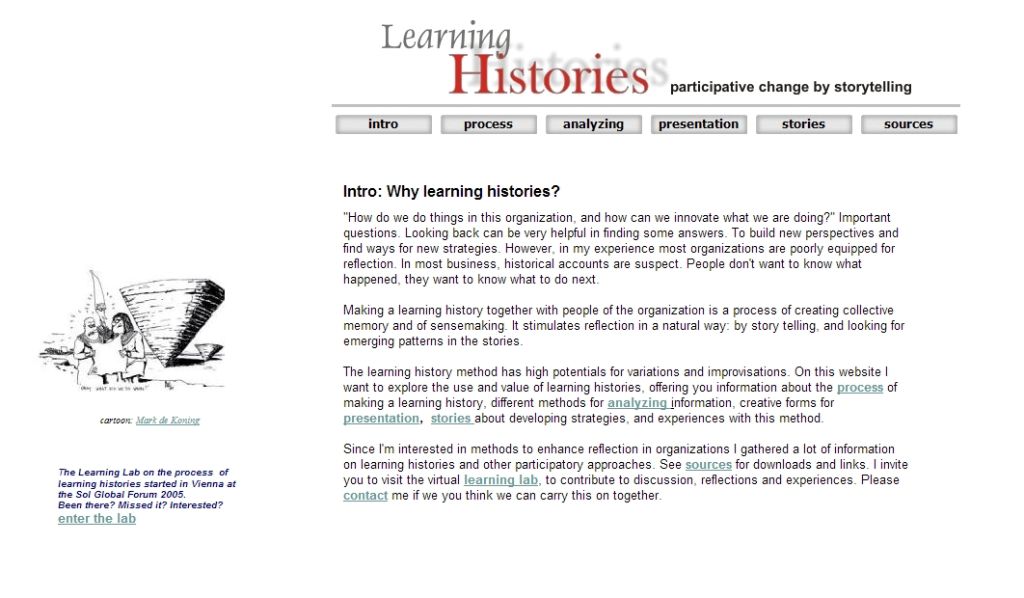“How do we do things in this organisation, and how can we innovate what we are doing?” Important questions. Looking back can be very helpful in finding some answers. To build new perspectives and find ways for new strategies. However, in my experience most organizations are poorly equipped for reflection. In most business, historical accounts are suspect. People don’t want to know what happened, they want to know what to do next.
Making a learning history together with people of the organization is a process of creating collective memory and of sensemaking. It stimulates reflection in a natural way: by story telling, and looking for emerging patterns in the stories. The history is performed by people who were/are involved in the central issue of the history, preferably also external people, like trainers, partners, stakeholders. So, a learning history is not only a product, but primary a process of making sense to (learning) experiences. This is important if one agrees (as I do) with Karl Weick:
“If people want to share meaning, then they need to talk about their shared experience in close proximity to its occurrence and hammer out a common way to encode it and talk about it. They need to see their joint saying about the experience to learn what they jointly think happened“.
Learning histories can be used to:
- Build awareness of the relation between investments and results; when was it worth the effort, when not? Why?
- Involve stakeholders in a process for development or change
- Develop collective memory in the organisation, to become more efficient and effective
- Develop new strategies, by gaining insight in dynamics and patterns in existing strategies
- Discover success factors for innovation
- Build reflection and communication capacity, for more effective collaboration between silos, teams
- Evaluation of a change process
Read more about working with learning histories on www.learninghistories.net, an online practical guide
In our personal lives, “experience is often the best teacher” or so the old saying goes. Why not, then, in corporate life? After a major event , a new product failure, a wild business breakthrough, a downsizing crisis, or a merger, many companies seem to stumble on in ways that miss the lessons of the past. Mistakes get repeated, while smart decisions do not. Most importantly, the old ways of thinking which led to past mistakes are never talked about; which often means that they are left in place to spawn new mishaps ad infinitum.
Art Kleiner and George Roth
